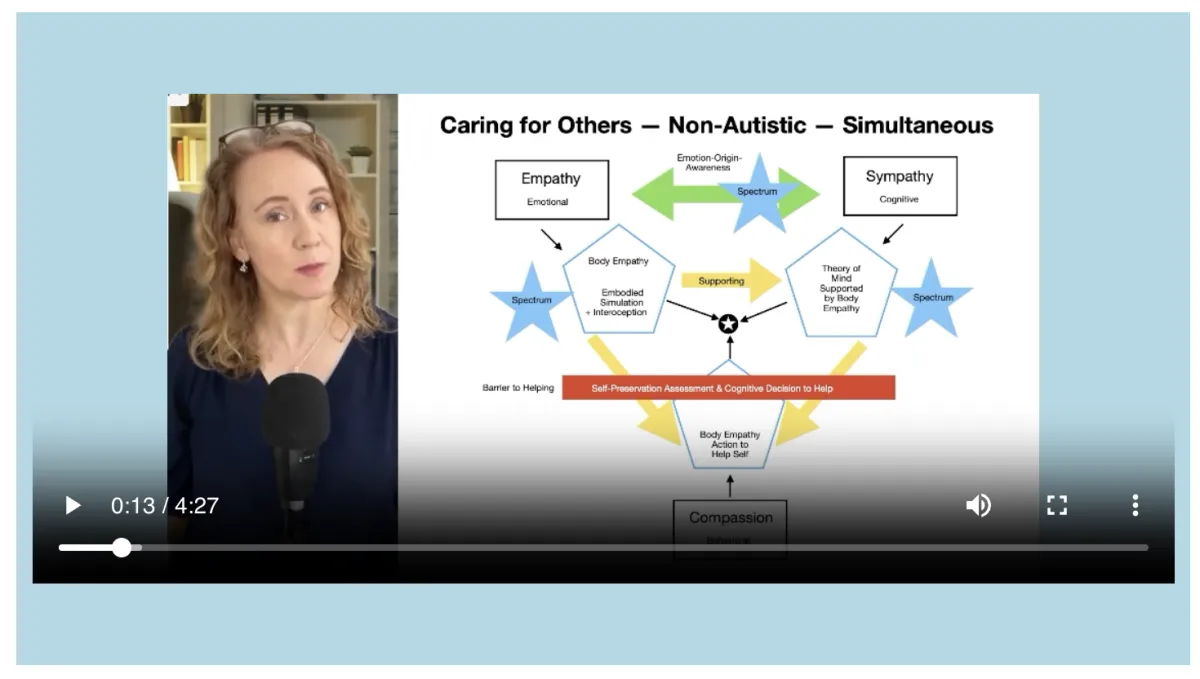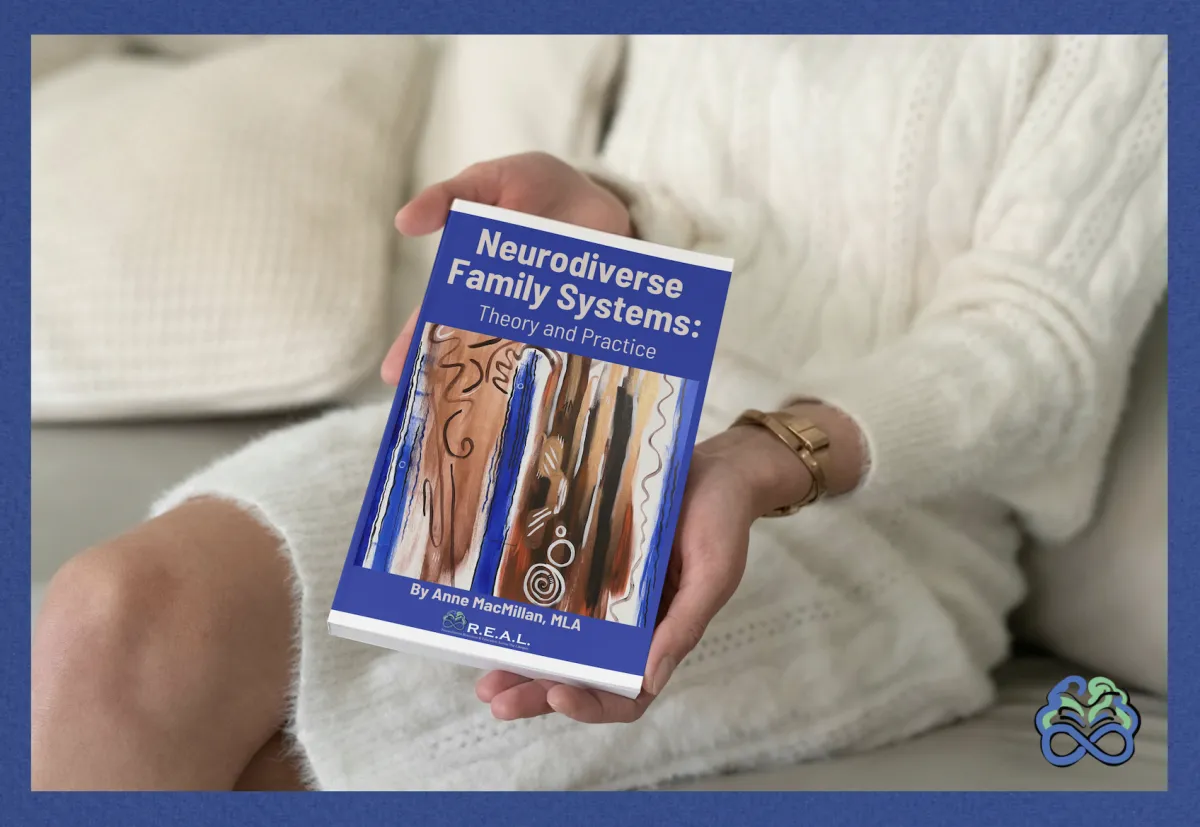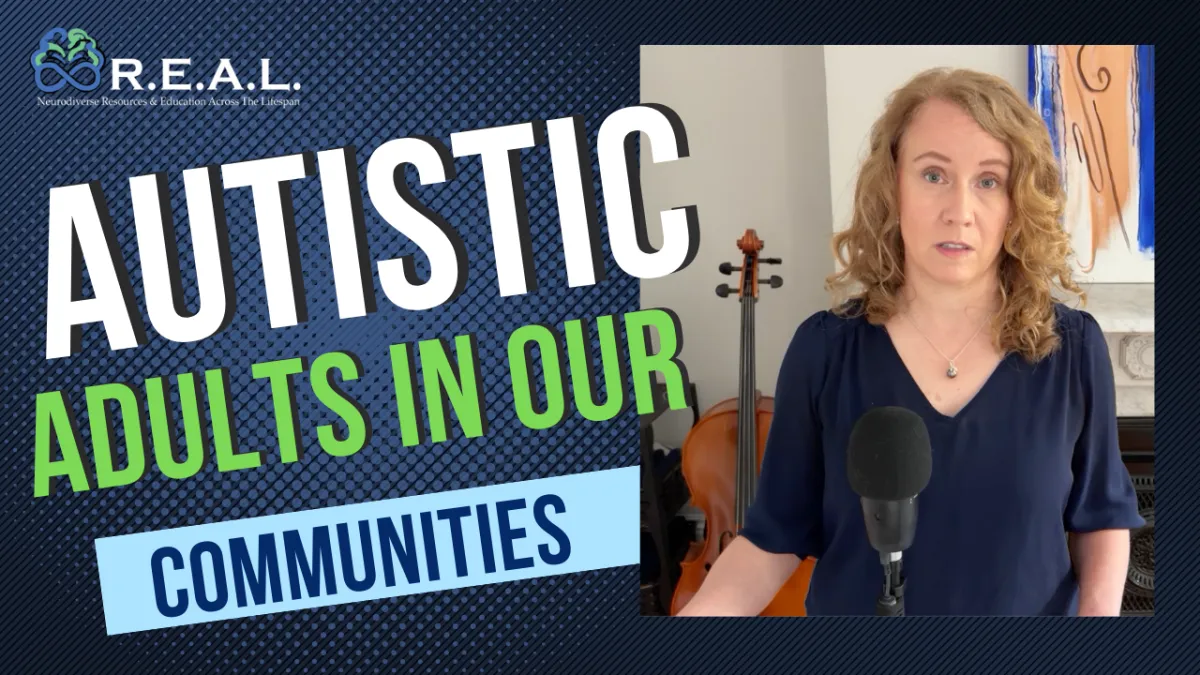
MacMillan's 10-Step Neurodiverse Family Systems Approach:
A Comprehensive Framework
to support neurodivergents and their families throughout adulthood.
R.E.A.L. Neurodiverse Programs For Professionals
WHAT ARE THE R.E.A.L. PROGRAMS?
Autism and other forms of neurodivergence shape how adults engage in social relationships—especially in families and intimate partnerships, where emotional demands run high and communication styles often differ.
Developed by Anne MacMillan, MLA, the R.E.A.L. Neurodiverse programs offer a clear, research-informed path forward. Built around a structured 10-step approach, these programs translate neuroscience, developmental psychology, and clinical insight into practical tools for real-life change. Adults gain access to targeted education, specialized assessments, and concrete strategies for building skills, making decisions, and strengthening relationships.
As awareness of adult neurodivergence expands, so does the demand for services that meet the moment—with depth, precision, and respect for every individual’s way of being.
WHY SHOULD YOUR PRACTICE USE THE R.E.A.L. PROGRAMS?
Neurodiverse families are commonly made up of autistic, attention neurodivergent (ADHD), and other neurodivergent family members. The different brains' different ways of perceiving and navigating the social world affect family social interactions, eliciting difficulties and distress that commonly lead to trauma and isolation.
In the mid-20th century, before neurodivergence in aNeurodiverse families often include autistic, attention neurodivergent (ADHD), and other neurodivergent members. Differences in how each brain processes social and emotional information shape everyday interactions—frequently leading to misunderstanding, relational strain, and social isolation.
In the mid-20th century, long before adult neurodivergence was recognized, psychology framed mental and relational challenges as evidence of disorder. Many neurodivergent individuals—unaware of their neurological differences—were mischaracterized as broken or dysfunctional. These labels disempowered them, and treatments that failed to account for brain-based variation often offered little meaningful support.
In the early 21st century, autism’s prevalence in children came into focus. Only now are we beginning to recognize the widespread presence of neurodivergence in adults. These adults are not disordered. They do not need to be “fixed.” They need access to insight, language, and tools that respect their neurology—so they can build skills, reduce suffering, and strengthen their relationships.
The R.E.A.L. Neurodiverse programs offer that path forward.dults was understood or recognized, psychologists began defining mental disorders that required treatment. Many neurodivergents, completely unaware that their brains were different, were unjustly labeled as "disordered" or "broken." These labels disempowered neurodivergents and treatments that didn't recognize brain differences offered little relevant support.
The high prevalence of autism in children was discovered in the early years of the 21st century. Today, we are finally recognizing multiple neurodivergencies in adulthood. These adults aren't "broken." They don't need "treatment" for "disorders." They need to understand the nuances of brain differences and have access to resources that will help them leverage their strengths and build skills to address their challenges.
The R.E.A.L. Neurodiverse programs offer solutions: solutions that work.

R.E.A.L. Neurodiverse
Resources & Education Across the Lifespan

Anne MacMillan, MLA
Author of the 10-Step Neurodiverse Family Systems Approach, Speaker, Researcher, Consultant, Coach, Educator and Expert Witness
WHO ARE THE R.E.A.L. PROGRAMS FOR?
Our comprehensive 10-step method is designed for use by psychologists, therapists, social workers, counselors, teachers, coaches, consultants, clergy, domestic violence workers, victim advocates and more.
The R.E.A.L. Neurodiverse Family Systems Approach is a comprehensive 10-step method for coaches, consultants, teachers, therapists, psychologists, social workers, mediators, domestic violence workers, victim advocates, spiritual leaders, and more.
The approach is designed to support professional growth through both structured education and direct relational experience. To access the full programs, at least one provider per office must complete our NFS-E Credential and become a Neurodiverse Family Systems – Educator. This ensures that each office has a designated provider who understands the framework and can guide implementation with fidelity.
While only one team member is required to complete the full credentialing process, all other providers receive meaningful and accessible support to ensure high-quality care across the team. Every provider begins with a clear, neurologically informed orientation that introduces the program’s foundational concepts, implementation principles, and ethical guidelines. From there, learning continues through guided use of the program materials with clients. As clients move through the 10-step structure, providers gain access to corresponding provider resources—learning in real time how to support neurologically diverse adults with clarity and care.
This approach reflects a core truth of neurodiverse relational systems work: while structured training is essential, deep understanding develops through direct experience. The program honors this by allowing providers to grow alongside their clients. Even those who are new to neurodiverse systems will find that the materials are intuitive, grounded, and developmentally attuned—inviting providers to apply their own wisdom while building confidence in a new and important domain.
WHAT MAKES R.E.A.L. DIFFERENT?
Traditional interventions are grounded in the assumption that relationship conflict can be resolved through shared dialogue and emotional processing. But in neurodiverse families and intimate life partnerships, these methods often overlook the root cause of distress: neurological mismatch.
The R.E.A.L. Neurodiverse model introduces a fundamental paradigm shift. Instead of beginning with group sessions, we start with the individual—recognizing that perception, empathy, expression, and regulation differ profoundly across neurotypes. Our structured 10-step program replaces generalized talk therapy with neurotype-specific education, tools, and developmental supports.
This shift moves providers away from pathologizing behavior and toward honoring difference. It reframes family and intimate partnership conflict not as dysfunction, but as the result of unmet neurological needs—and offers a clear, compassionate pathway for lasting change, even when only one partner or family member is ready to begin.



HOW DO THE R.E.A.L. PROGRAMS WORK?
The R.E.A.L. Neurodiverse Family Systems Approach guides adults—and the professionals who support them—through a structured but flexible 10-step process designed to build insight, reduce distress, and support sustainable relational growth. Clients receive materials tailored to their neurology (autistic or non-autistic), while providers use parallel resources that align with the client’s processing style.
Each of the 10 steps addresses a core dimension of neurodiverse relational life—such as empathy differences, neurological mismatch, relational role entrenchment, boundary development, problem solving, and cycles of trauma. Steps are sequential but adaptable, allowing providers to meet clients where they are without sacrificing developmental integrity.
Clients move through video-based educational content, guided assessments, structured reflection prompts, and integrative exercises that help them make sense of their experiences through a neurologically attuned lens. Providers receive step-specific guides that support interpretation, discussion, and skill-building, ensuring that support remains aligned with the client’s neurotype and developmental readiness.
Unlike many traditional models that prioritize behavior change or surface-level communication strategies, the R.E.A.L. Approach integrates neurological, emotional, somatic, and systemic layers of experience.
Tools range from conceptual mappings and guided journaling to artwork-based exercises and somatic strategies—supporting a wide range of processing styles and learning needs.
Because each client engages individually, the program remains effective whether or not other family members or partners are involved. When multiple participants are ready, shared theory and neurologically specific tools create a common language for growth without forcing consensus or conformity.
About Anne MacMillan:
I am the creator of the R.E.A.L. Neurodiverse™ Family Systems Approach — the first comprehensive, educational 10-step model designed to help autistics, non-autistics, and professionals understand the neurological foundations of relational conflict and connection. My work integrates developmental psychology, systems theory, and over five decades of lived experience inside profoundly neurodiverse family systems.
I originally developed the Neurodiverse Family Systems Theory based on my education, personal history, and the insights I gained in the private neurodiverse services practice I founded in 2017. Since then, the work has evolved into a clear, scalable framework that professionals can use to guide their clients through complex neurodiverse dynamics with structure, clarity, and compassion.
Today, I support professionals across disciplines — therapists, psychologists, coaches, social workers, clergy, and educators — who are discovering that neurodiversity is often the missing piece in the adult relationship challenges they see. Through the Neurodiverse Family Systems Educator Credential (NFS‑E), providers gain access to the full R.E.A.L. 10-Step system, including original quantitative assessments, dyadic tools, and evidence-informed support resources they can immediately apply with clients.
I hold a research-based master’s degree in psychology from Harvard University, where I received the Director’s Thesis Award for one of the world’s first quantitative studies on Level 1 autism in intimate life partnerships. My graduate and undergraduate studies focused on developmental psychology — work that continues to inform every aspect of the R.E.A.L. approach.
In total, I bring more than 50 years of lived experience in neurodiverse family systems (including my childhood in a profoundly neurodiverse family), over 20 years of experience in a neurodiverse intimate partnership, and nearly a decade of professional practice supporting individuals, couples, and families navigating the complexities of neurodiversity.
I self-identify as a high body empathetic and attention neurodivergent (ADHD). I’ve never pursued a formal ADHD diagnosis, as I trust self-identification over professional labeling. I am not autistic, but I have spent my life deeply connected to autism, attention-based neurodivergence, and high-body-empathy neurology — both personally and professionally. My work is dedicated to helping others gain the clarity, skills, and relational wellbeing they deserve.

Anne MacMillan, MLA
Author of the R.E.A.L. 10-Step Neurodiverse Family Systems Approach, Speaker, Researcher, Consultant, Coach, Educator and Expert Witness

Recent Blog Posts

Level 1 Autistic Adults in Our Families and Communities: Unseen Challenges and Neurodiverse Communication
Autism is a natural neurological variation that affects communication and socializing. Level 1 autism is characterized by its subtler manifestations. Many trained professionals have difficulties recognizing it in adults due, in part, to the reality that many Level 1 autistic adults have developed effective compensatory strategies, helping them to manage the difficulties they face socializing with non-autistics.
Level 1 autism also requires less support than Levels 2 and 3 autism and professionals tend to prioritize to supporting Level 1 autistic children over Level 1 autistic adults. Level 1 autism is also much more apparent in children and many adults remain undiagnosed leading to a situation in which Level 1 autistic adults are integrated into our families and communities with relatively little societal or professional awareness of their presence or neurological differences.
The Journey from Childhood to Adulthood with Level 1 Autism
Children with Level 1 autism often struggle with social cues, making their condition more noticeable during early development. These children may find it difficult to engage in typical social interactions, leading to challenges in forming friendships and understanding social norms. However, as they grow older, many autistic individuals develop strategies to cope with and mask their social difficulties.
One key strategy is the use of declarative memory—the ability to recall facts and details. Autistic individuals often rely on their declarative memory to memorize social rules and patterns through a process of trial and error. When a particular behavior or response leads to social success, they are likely to repeat it, gradually building a repertoire of socially acceptable behaviors. Over time, this learned behavior can make their autism less apparent, allowing them to blend into the social world more seamlessly.
However, this adaptation does not change the fundamental differences in how their brains process social information. While these individuals may appear socially adept, they often continue to experience significant internal challenges, including anxiety, exhaustion, and confusion, as they work to navigate a world that inherently operates differently from their natural inclinations.
The Underdiagnosis of Level 1 Autism in Adults
A significant number of adults with Level 1 autism were never diagnosed as children, particularly those born before the 21st century when awareness and understanding of autism were far less developed. These individuals grew up in a world that largely did not recognize their neurological differences, leaving them to develop coping mechanisms on their own. As a result, many of these adults have gone "under the radar," living their lives without a formal diagnosis or understanding of their neurological variation.
This lack of recognition is not only a missed opportunity for support but also contributes to ongoing challenges in communication and social interactions. Without the framework of an autism diagnosis, these individuals—and those around them—may not fully understand the source of their social difficulties. This can lead to frustration, misunderstandings, and strained relationships in both personal and professional settings.
The Impact of Neurodiverse Miscommunications
The differences in how autistic and non-autistic brains perceive and process social information can lead to frequent miscommunications. These miscommunications occur across all areas of life—online, offline, in the workplace, and within families. Autistic individuals may struggle to interpret the non-verbal cues, tone of voice, or implied meanings that non-autistic individuals are using to communicate with each other and that they attempt to use to communicate with autistics, not knowing that the autistics aren't interpreting their cues in the same ways the non-autistics mean them. Non-autistic individuals may also misinterpret autistics' differences voice inflection, facial expressions and body language as rudeness or dismissal, while the autistics have no intention to communicate such messages. Autistics' more direct communication style, literal thinking, or unique perspectives can amplify the non-autistic sense that Level 1 autistics are rude, disinterested, or lack understanding.
These misunderstandings are compounded by the fact that most people do not assume that someone else’s brain might work fundamentally differently from their own. Because Level 1 autism is often "invisible" in adults, these individuals may be perceived as quirky, introverted, or socially awkward rather than recognized as neurodivergent. This lack of awareness on both sides can lead to feelings of isolation, frustration, and conflict.
Recognizing and Supporting Neurodiverse Individuals
Given the prevalence of undiagnosed Level 1 autism in adults, it is crucial to foster a greater awareness and understanding of neurodiversity in our communities. Recognizing that not everyone processes social information in the same way is the first step toward reducing the frequency and impact of neurodiverse miscommunications.
For non-autistic individuals, this means being mindful of the different ways people communicate and interact. It involves being patient, asking clarifying questions, and avoiding assumptions about someone’s intentions or abilities based on their social behavior. For autistic individuals, receiving a diagnosis later in life can be a powerful tool for self-understanding and acceptance, as well as for seeking appropriate support and accommodations.
In the workplace, educational settings, and social environments, creating spaces that are inclusive and accommodating of neurodiverse needs can help bridge the communication gap between autistic and non-autistic individuals. This includes providing clear, direct communication, offering written instructions or reminders, and fostering an environment where all communication styles are respected and valued.
Conclusion
Level 1 autism in adults presents unique challenges that often go unrecognized due to the subtleties of the neurological variation. While many individuals have developed sophisticated compensatory strategies to navigate the social world, the fundamental neurological differences between autistic and non-autistic individuals remain. These differences can lead to frequent and sometimes significant miscommunications, affecting relationships and well-being.
By increasing awareness and understanding of Level 1 autism and the diverse ways in which it can manifest, we can create more inclusive and supportive environments for all individuals. Recognizing and respecting neurodiversity not only helps reduce miscommunications but also enriches our communities by valuing the unique perspectives and contributions of every individual.
Support for Professionals and Clients:
Neurodiverse Credentialing and Practice Support for Psychologists, Therapists, Social Workers, Clergy, and Domestic Violence workers is available here.
Autistic and non-autistic members of neurodiverse family systems can reach out for support here.

Anne MacMillan, MLA
Author of the R.E.A.L. 10-Step Neurodiverse Family Systems Approach Available on the UnitusTI Cloud
About the Book
Neurodiverse Family Systems: Theory and Practice offers a groundbreaking framework for understanding the unique relational dynamics that emerge within families shaped by neurological difference. Bridging developmental theory, lived neurodivergent experience, and applied clinical insight, this book challenges conventional models and introduces a nuanced approach to working with autism, ADHD, and high body empathy across generations.
Essential reading for professionals seeking to deepen their understanding of neurodiverse relational systems, it invites a rethinking of how empathy, trauma, and identity operate within the family landscape—and how meaningful change begins with neurological clarity. connection, stability, and emotional peace.

© 2025 R.E.A.L. Neurodiverse™
All Rights Reserved
anne@REALneurodiverse.com
Text or Call: (617) 996-7239 (United States)
